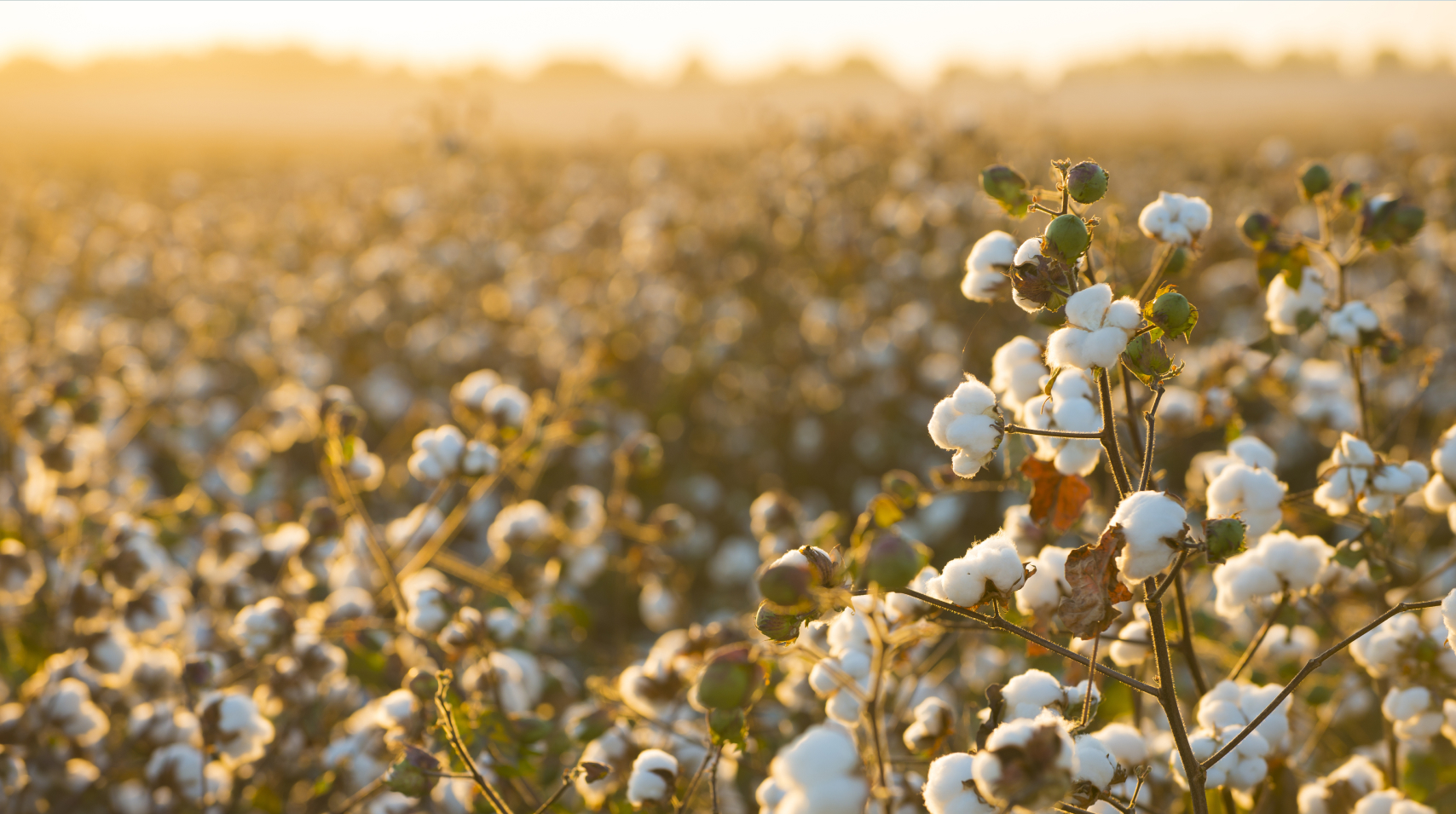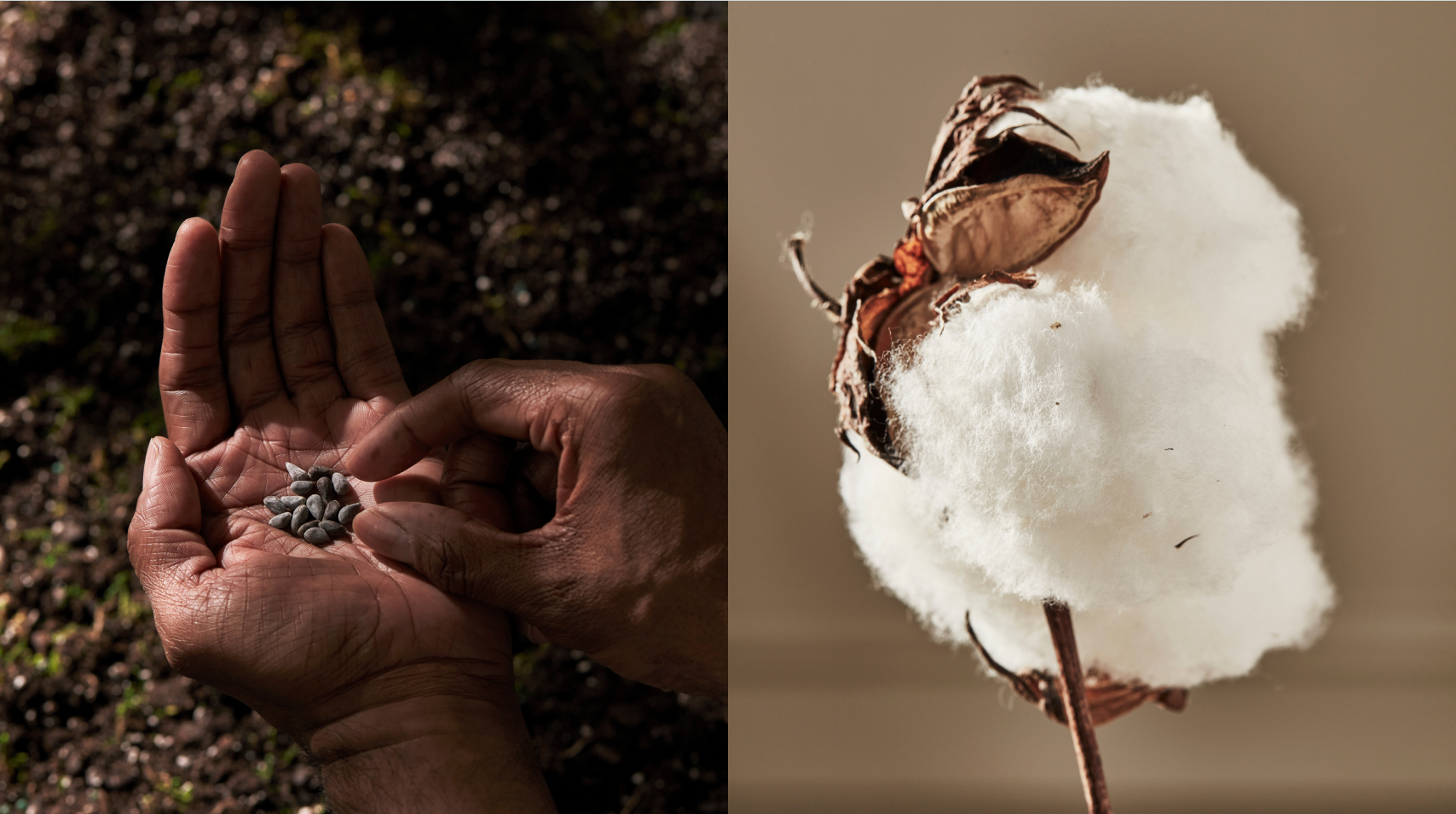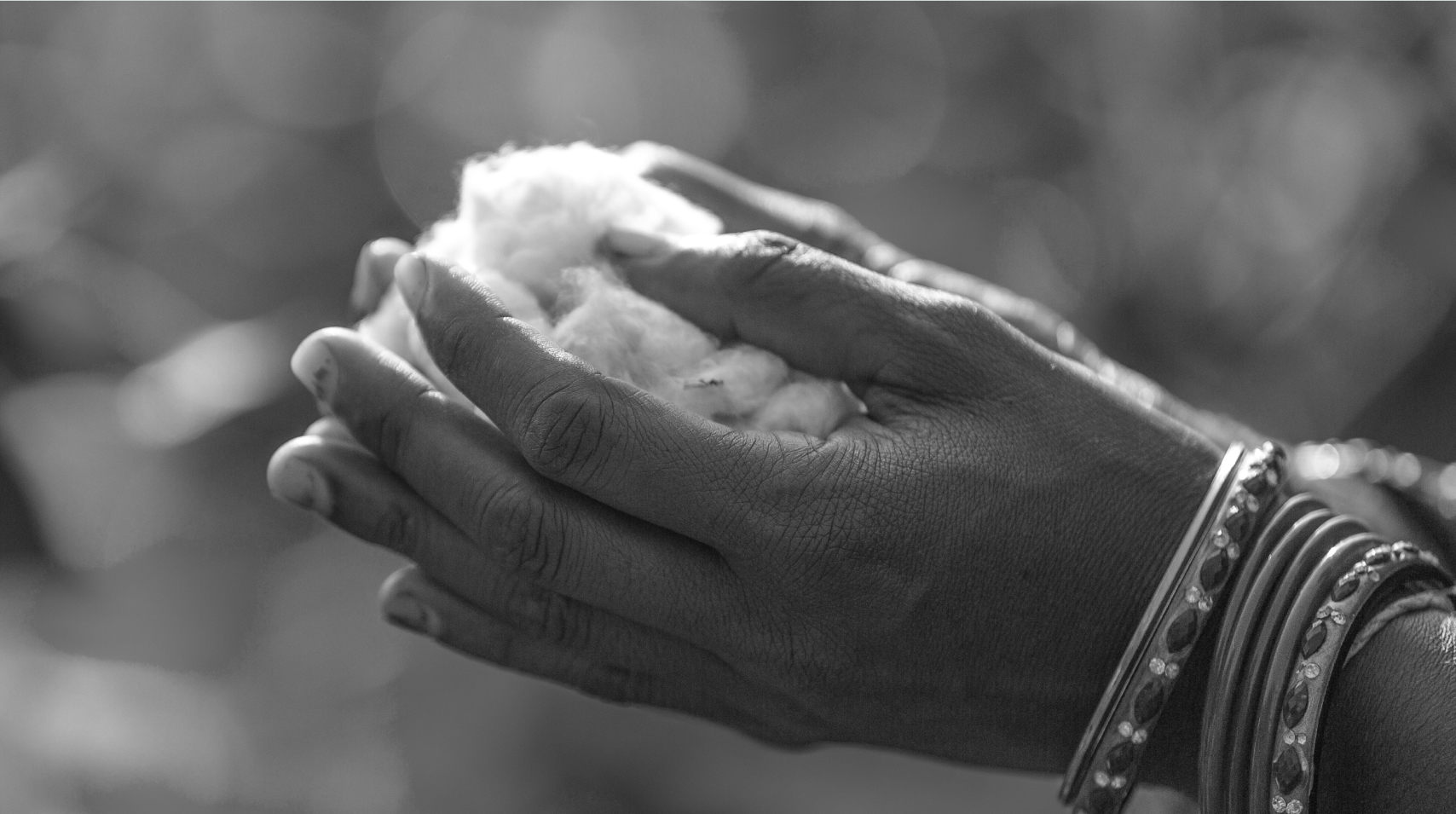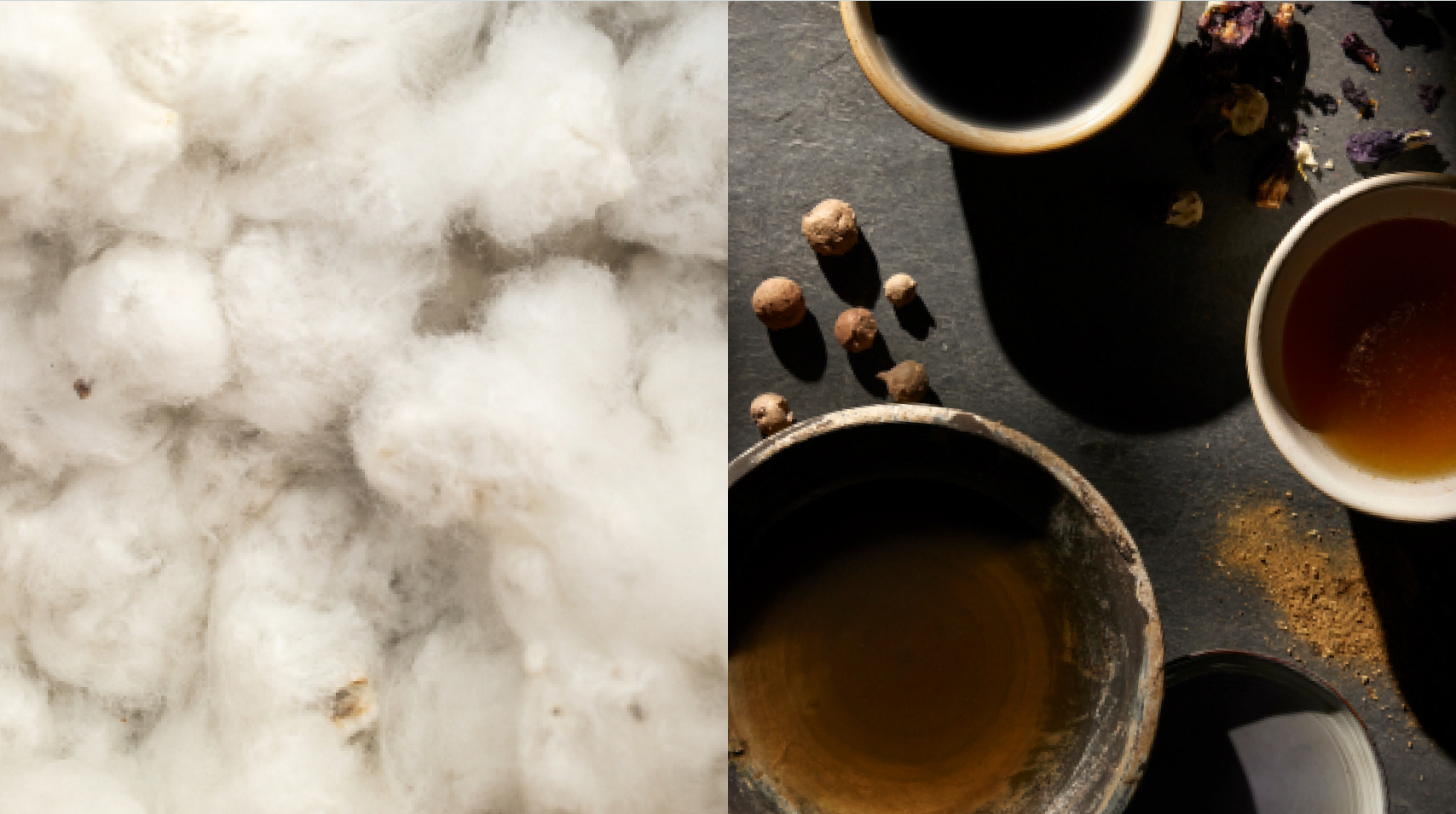Anyone interested in environmentalism has heard just how harmful inorganic pesticides and insecticides can be.These synthetic chemicals are used in the conventional production of goods, including our food, our clothing, and even our bedding—unless they’re produced organically. Organic cotton and regular cotton may be from the same plant, but they couldn’t be more different. So, what’s the difference between them, and how does it impact you? We’re here to help you understand all there is to know about the topic.

What Is Organic Cotton?
Organic cotton is grown, processed, and harvested completely differently than conventional cotton. One difference is that organic cotton is cultivated without the use of synthetic chemicals, such as fertilizers and inorganic pesticides. Our organic cotton relies on the use of marigolds, a natural pest repellent that replaces these common, harmful synthetic pesticides.
Additionally, organic cotton is certified by verified third parties, like The Global Organic Textile Standard (GOTS). For certification to be approved, the cotton has to undergo a series of tests and processes to confirm that every step of its production has met strict standards, including that no harmful pesticides, insecticides, or fertilizers were used.
Together, these differences make a huge difference regarding the cotton’s impact on the ecosystem, farmers, and you.
Differences Between Organic Cotton And Conventional Cotton:
While there are many, the main difference is found in the life cycle of the cotton: how the cotton gets from the farm to your home.

How It’s Grown
Organic cotton has a lower environmental impact than conventional cotton because of how it is grown. The seeds used to plant organic cotton aren’t treated with chemicals, nor are they genetically modified organisms (GMOs). As the plants start to grow, the soil is rotated, which helps the plant retain water better because there is more organic matter in the soil. Instead of using chemicals to get rid of weeds surrounding the organic cotton, they are removed by hand, and are controlled through hand hoeing and cultivation.
Organic cotton also uses a more sustainable watering process. For the most part, organic cotton is rain-fed. The organic cotton farms we partner with are located in the highest rain-fed parts of India, and naturally use 90% less water than conventional farming counterparts, which use an intensive irrigation process that takes more water from the local ecosystem.
Organic cotton is better for the environment, whereas regular cotton processing can wreak havoc on its environment. Some of the most harmful pesticides known to man, including a quarter of insecticides that are used across the globe, are used during the growth process of typical cotton. These man-made fertilizers, pesticides, and insecticides also contribute to the loss of soil caused by the practice of monocropping—growing the same crop on the same plot of land, year after year.
Cotton also comes in short, long, and extra-long fibers or staple lengths. The longer the fibers, the better the quality. A longer fiber is softer, stronger, and more durable, which is important to consider when it comes to your bedding. We use the longest staple-length cotton we can (since it’s extremely hard to grow extra-long fibers organically). This allows our organic cotton to fade less than its short-staple lengths counterparts. Most conventional cotton is a short staple length, which means it has a shorter lifespan when it comes to frequent use.

How It’s Harvested
Organic cotton is handpicked without the use of synthetic chemicals. This toxin-free process is better for the farmers, because it doesn’t risk their health through exposure to harmful chemicals. In addition, hand-harvesting cotton leads to better quality cotton versus machine-harvested cotton, since harvesters can pick and choose the finest cotton from the crop. This also helps farmers determine whether or not plants are mature enough for harvesting.
Conventional cotton is machine-picked and processed with ingredients that are harmful to humans. It is important to note that the average life expectancy of a farmer growing conventional cotton in India is 35 years old. This is caused not only by the harsh chemicals used while harvesting and processing normal cotton, but also by unfair business practices that put workers in debt. As a result, India is experiencing its biggest wave of suicides among cotton farmers, resulting in over 270,000 deaths since 1995.
This devastating reality is what pushed us to become the first 100% organic Fair Trade Certified™ cotton bedding company ever.

How It’s Processed
When conventional cotton is harvested and prepared for cutting, it first goes through a number of chemical treatments and baths, which often include dyes that contain heavy metals.
Organic cotton doesn’t use these harmful chemicals; occasionally, it will be treated with a natural colorant like clay, or use a natural dye. When creating our shades with GOTS-approved dyes, we follow strict rules and regulations to ban chemicals and processes that could cause serious harm to the producers or consumers. This is one of the many reasons organic cotton is safer for individuals unable to wear regular cotton due to chemical sensitivities.
We use a natural potato and wheat-based recipe, not acrylic plastics, to strengthen our yarns at the spinning stage. This maintains the organic state of our cotton—and protects the integrity of every organic cotton fiber—as this treatment washes away during dyeing. Our use of more sustainable raw materials helps make our products softer and more luxurious.
Certifications For Organic Cotton
To ensure your product is organic cotton, there are a few specific certifications you should be looking for called: GOTS and Standard 100 by OEKO-TEX. These assure that the items come to you after vigorous verification processes, so you receive the highest quality organic cotton products.
Here’s an explanation of what these certifications mean for you:
GOTS stands for Global Organic Textile Standard, and they are the worldwide leading textile processing standard for organic fibers. The GOTS certification oversees and looks at the entire supply chain when it comes to organic verification. An item needs to be made of 95% organic fibers to achieve this standard. When it comes to their restrictions, they look at organic fibers, ecological and social criteria, the processing stage, and third-party verification.
Standard 100 by OEKO-TEX is a certification focused on the textiles in the product, as opposed to the entire supply chain. This certification process involves ensuring your item is toxin-free at every step of its journey. Standard 100 by OEKO-TEX does not mean the product is organic, but it does mean it is toxin-free.
We follow strict rules and regulations from both GOTS and Standard 100 by OEKO-TEX. Having one of these certifications is excellent, but two is better than one—and we have both.
Our commitment to Fair Trade USA and GOTS partnerships is extremely important to us. It guarantees environmental management to reduce water usage, prohibits child and forced labor, ensures equal rights and pay for women, and gives people livable wages, benefits, standard working hours, and mandatory breaks.
Why Organic Cotton Is Better Than Conventional Cotton
Organic cotton is of higher quality because it’s grown, harvested, and processed in a vigorous way that makes a better life for the people who grow it, and it makes a better product for the people who use it.
It’s made without the use of harmful chemicals. Since our organic cotton products are made with 0 toxins at every step, you can sleep soundly knowing that 100% of our products are free from harmful chemicals, pesticides and GMOs.
Organic cotton farming practices are better for farmers overall health and quality of life. The idea of further supporting an industry that drives human beings to an early death was unacceptable to us. That’s why we established a better end-to-end system working directly with family owned farms and factories to ensure traceability at every step. From day one, we’ve committed to partnering and honoring artisans and farmers who are valued for their knowledge and expertise—we ensure they are paid fairly, they are treated fairly, they work at will, and they are adults.
Organic cotton uses 90% less water than conventional cotton, which greatly impacts the environment. Plus, since there aren’t any chemicals involved in the growth progress, there is no risk of chemicals entertaining the water supply. We are also proud to share that we use 62% less energy used in regular cotton farming. As a result, our greenhouse gas emissions are also 60% lower than traditional cotton farming. To read more about how we impact the environment, read our impact report here.
To us, the choice is clear. By sourcing a safer, more sustainable raw material that makes more luxurious products—a line of duvet sets, sheet sets, and more that are safer, softer, and longer-lasting—we can meaningfully improve our homes and our world.
